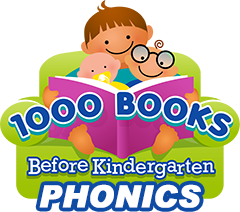As forth by LINCS,* phonemic awareness is the ability to notice, think about, and work with the individual sounds in spoken words.
The work of LINCS has been instrumental in helping understand what is necessary before children learn to read. Specifically, children need to become aware of how the sounds in words work. Children must appreciate that words are made up of speech sounds or phonemes. A phoneme is the smallest part of a sound in a spoken word that makes a difference in a word’s meaning. Your child can demonstrate whether he is ready to read by showing phonemic awareness in many ways including:
- Recognizing which words in a set of words begin with the same sound (rhyming)
- Isolating and saying the first or last sound in a word
- Combining or blending the separate sounds in a word to say the word, and
- Breaking or segmenting a word into its separate sounds (decomposing).
Please keep in mind that phonemic awareness and phonics are not the same thing. Phonemic awareness involves recognizing that the sounds of spoken language work together to make words. Phonics and phonics programs such as the 1000 Books Before Kindergarten Complete Program on the other hand focus on the relationship between phonemes (sounds) and graphemes (letters) that represent those sounds in written language.
LINCS concluded that children need to have an understanding of phonemic awareness before they can become effective readers.
Here are some of the highlights from the evidence-based research on phonemic awareness instruction:
- First and foremost is that phonemic awareness can be taught and learned. To be effective, the phonemic awareness instruction should enable children to notice, think about, and work with (manipulate) sounds in spoken language.
- Second, phonemic awareness goes hand in hand with helping a child learn to read. The research shows that phonemic awareness improves the ability to read words and comprehend what is read.
- Third, proper phonemic awareness instruction will help a children learn to spell. Phonemic awareness instruction that involves how to segment words into phonemes will help children relate the sounds to letters as they spell words.
- Fourth, effective phonemic aware instruction challenge children to manipulate phones by using the letters of the alphabet. This is why some schools of thought have encourage learning the alphabet by phoneme rather than letter representation/
- Fifth, the focus on teaching children to blend and segment phonemes in words, will likely produce greater benefits to enhance the child’s reading ability than teaching several types of manipulation.
- Sixth is that phonemic awareness instruction can help all types of students learn to read, including preschoolers, kindergartners, first graders who are just starting to read, and older, less able readers.
- Seventh, the research concluded that only approximately 20 hours of class time over the school year should be enough for phonemic awareness instruction.
- Finally, small group instruction is more effective when helping students acquire phonemic awareness and learn to read, compared to individual or whole class instruction. After you child has demonstrated phonemic awareness, we invite you to engage with your child at complete the 1000 Books Before Kindergarten Complete Phonics Program.
* The Literacy Information and Communication System (LINCS) is a national leadership initiative of the U.S. Department of Education, Office of Career, Technical, and Adult Education (OCTAE) to expand evidence-based practice in the field of adult education.

